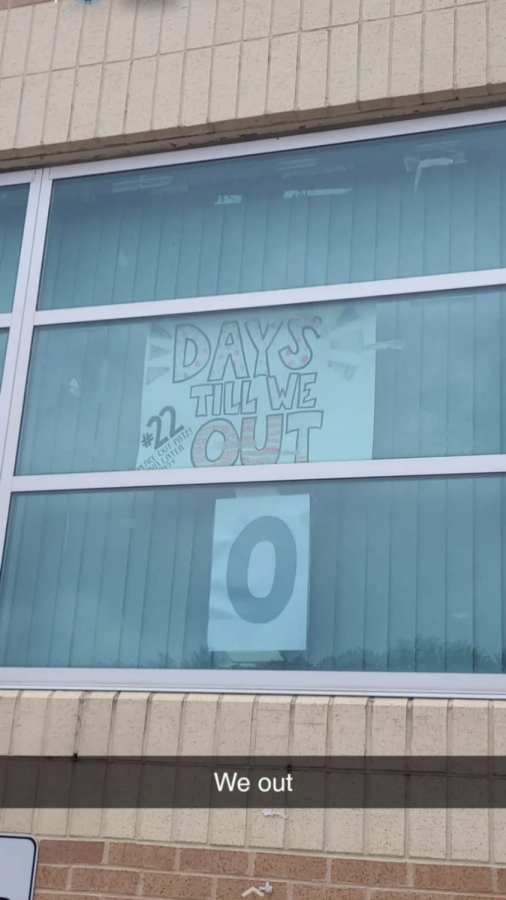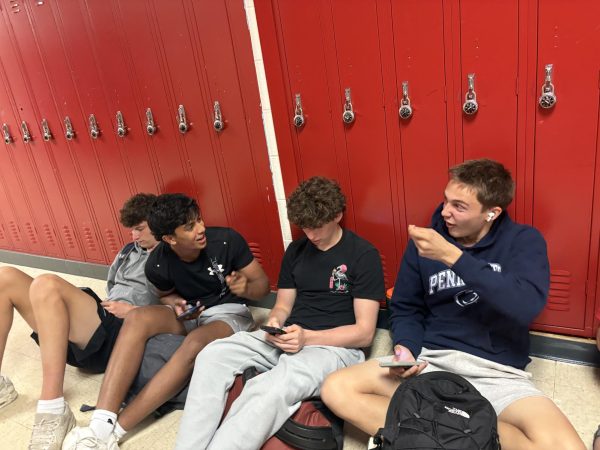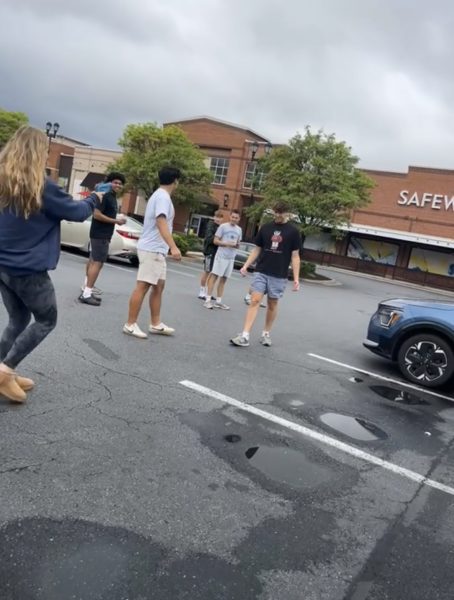Senioritis affects underclassmen as well
The seniors count down to their last day of school as posted near the parking lot.
Senioritis, a slang term for the collective loss in academic motivation amongst high school seniors near the end of the school year, seems to have hit particularly hard this year, even for those who are not seniors. Spreading at a rate that could parallel rising Covid-19 cases, senioritis may just be the school’s newest pandemic; as the debilitating school year comes to an end, the remaining freshmen, sophomores, and juniors face another grueling three weeks before a long-awaited summer vacation.
This school year has brought a series of unique challenges for each student in every grade, with adjusting to the return to in-person learning barely grazing the surface of an iceberg of struggle. With the world pandemic status constantly fluctuating yet directly affecting student life, it is evident that a rapid, unprecedented burnout rate amongst high schoolers was inevitable. Perhaps the concept of “senioritis” is a veil term that allows students to put a name to the mental, physical and emotional exhaustion they have faced throughout the past eight months.
For juniors, this year has been a non-stop pendulum of perpetual academic stressors, including the SAT, AP exams, making up for extracurriculars the online year had stunted, applying for jobs and internships, upcoming college applications, just to name a few. With overwhelmingly permanent decisions on their shoulders, not being burnt out is a rarity. Juniors, myself included, cycle through days packed with SAT and school tutoring sessions, extracurricular activities, and jobs, over and over again. With such taxing activities on a daily basis, it’s hard not to overstep the line between a healthy school and personal time balance. “I’m not a senior but I think senioritis is already hitting me, I can’t believe I have to do another year of this. Very ready for high school to be over,” junior Isaac Muffett said.
Junior Elleson Tran agrees. “Senioritis is hitting pretty hard – there’s just not much motivation to go to school after exams,” Tran said.
On the other hand, sophomores and freshmen alike are experiencing their first year in an actual high school building under drastically different conditions than what most had. Re-entering in-person learning is challenging for all, but for those with no previous experience with a typical high school workload, this transition may have been discouraging in effect.
“Going online made it too easy to be distracted, so I had a lot of trouble managing my time after entering in-person high school because it’s not something I had to deal with, and learning how to study was also a struggle,” sophomore Paige Foster said.
However, beyond the student body, the question of how the staff are handling things at this point in the year arises. Managing multiple classes of students dealing with senioritis while readjusting lesson plans to in-person learning may not be the easiest feat in the book, and teachers are in agreement. “Senioritis increases teacher workload because we have piles of makeup work coming in at the last minute, we have to send communication home because of poor grades, and tardiness is an issue,” a math teacher who requested to stay anonymous said.
Vase agrees. “Teachers do have to chase down all of the seniors who can’t be bothered to get their work in sometimes,” Vase said.
The uncertainty regarding the pandemic and in-person learning has taken a large toll on students even before this time of the year. “Generally, the decrease in work motivation seemed to have taken place starting from earlier on in the year. We’ve always had a presence of senioritis, but it hit more in particular this year; I try my best to set clear deadlines with my students,” history teacher Amy Pollin said.
Your donation will support the student journalists of Thomas S. Wootton High School. Your contribution will allow us to purchase equipment and cover our annual website hosting costs.
Joyce Yang is a 2022 graduate.







